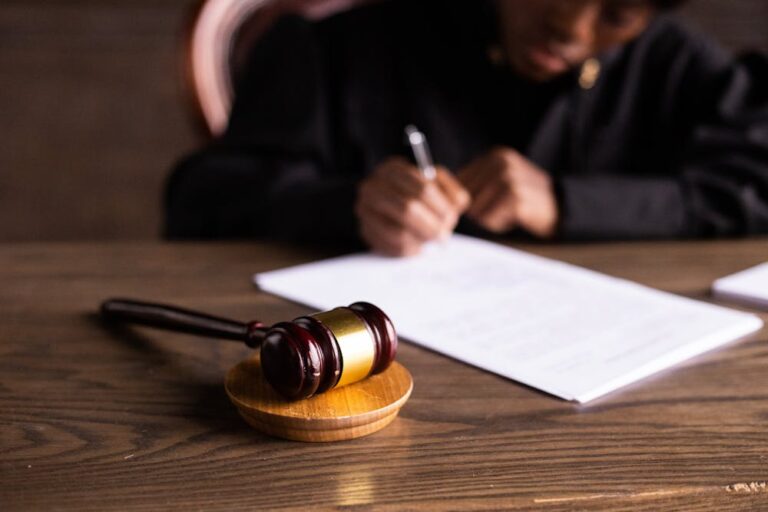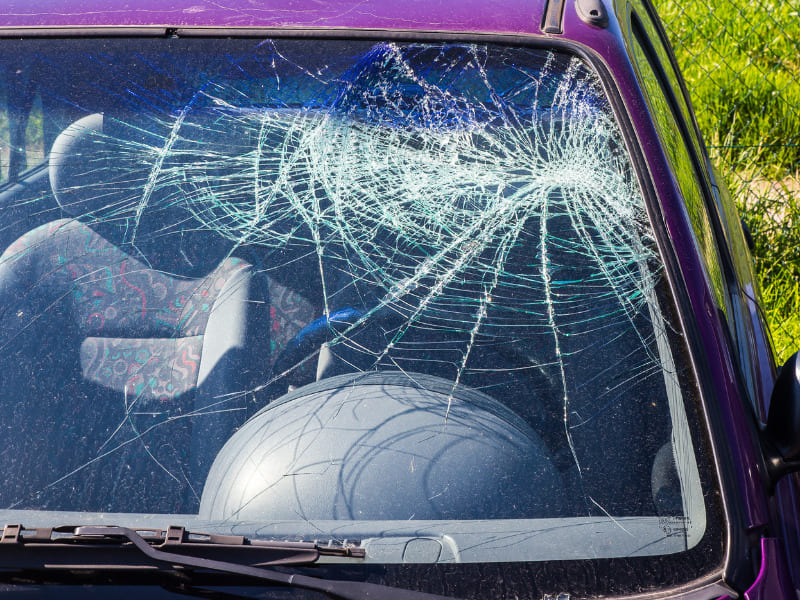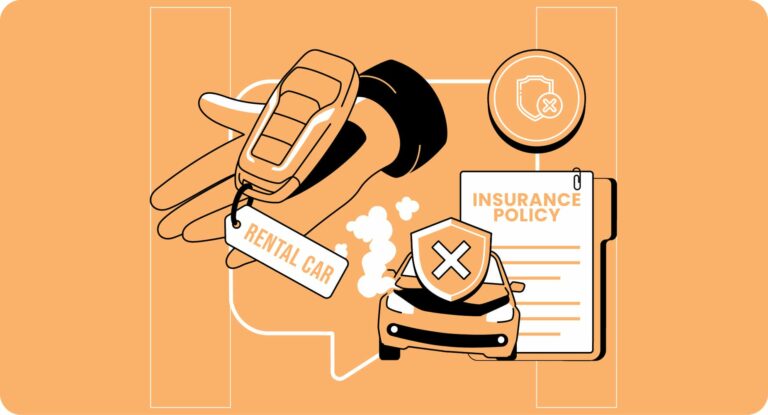Car insurance is meant to protect you financially in the event of an accident, covering damages to your vehicle, other people’s property, and medical expenses for injuries. However, California operates under a “fault” insurance system, and having insurance doesn’t always shield you from lawsuits.
In this guide, we’ll explore the basics of car insurance, the legal landscape in California, the determination of liability and fault, and specific situations where you might still face a lawsuit despite having insurance.
Stats About California Traffic Accidents
| Statistic | Details |
|---|---|
| Drop in Traffic Deaths (First Half 2023) | 12% |
| Traffic Deaths (First Half 2023) | 2,061 |
| Estimated Traffic Deaths (2023) | Over 4,000 |
| Nationwide Traffic Deaths (2023) | Approximately 40,000 |
| Increase in Pedestrian Deaths (2010-2021) | 77% |
| California Traffic Fatalities Due to Speeding (2021) | 35% of 4,285 |
| Crashes at Intersections | 36% |
| Speeding-Related Fatalities Nationwide (2021) | 29% |
| Vision Zero Approach | Aims to reduce traffic fatalities by changing traffic systems and terminology |
| Spike in Pedestrian Fatalities (OECD Countries, 2020) | Largest spike in the U.S. at 5% |
Explanation of Car Insurance and Its Purpose
Car insurance is designed to protect you financially if you’re involved in an accident. It covers damages to your vehicle, other people’s property, and medical expenses for injuries.
In California, having car insurance is not just a good idea—it’s a legal requirement. Understanding the purpose and limitations of your insurance coverage is essential for every driver.
Types of Car Insurance Required by Law
California requires drivers to have a minimum amount of liability insurance.
This includes $15,000 for injury or death to one person, $30,000 for injury or death to more than one person, and $5,000 for property damage.
These minimums are designed to cover basic expenses, but in many cases, they may not be enough.
Liability Insurance Coverage Limits
Liability insurance covers damages you cause to others. However, if the damages exceed your policy limits, you could be personally responsible for the remaining costs.
For example, if you cause an accident resulting in $50,000 in damages but only have $30,000 in coverage, you could be sued for the remaining $20,000.
Optional Coverages and Their Roles
In addition to liability insurance, there are other types of coverage that can provide additional protection.
Collision coverage pays for damage to your own vehicle, while comprehensive coverage handles non-collision-related incidents like theft or natural disasters.
Uninsured/underinsured motorist coverage protects you if you’re hit by a driver without adequate insurance.
Liability and Fault in California Car Accidents
Determining liability and fault in California car accidents is a crucial aspect of understanding your potential legal and financial responsibilities. California follows a comparative negligence standard, which means that more than one person can be found at fault for an accident.
Comparative Negligence Standard in California
California’s comparative negligence law allows for the apportionment of fault among multiple parties involved in an accident.
This means that even if you are partially at fault, you can still recover damages, but your compensation will be reduced by your percentage of fault.
For instance, if you are found to be 30% at fault for an accident, you can only recover 70% of the total damages.
How Fault Is Determined in Car Accidents
Determining fault in car accidents is a critical step in the claims process. Understanding who is responsible helps decide who pays for the damages and can influence legal proceedings.
Various factors come into play when assessing fault, and these can significantly impact the outcome of an accident case.
- Police Reports
- Witness Statements
- Traffic Laws
- Accident Scene Evidence
- Driver Statements
- Photographs and Videos
- Insurance Company Investigation
- Accident Reconstruction Professionals
- Surveillance Footage
- Weather and Road Conditions
Determining fault is a multifaceted process that requires careful consideration of various pieces of evidence. This process is essential not only for insurance claims but also for legal accountability.
Impact of Partial Fault on the Ability to Sue
Being partially at fault does not prevent you from suing the other party. However, the amount you can recover will be adjusted according to your share of the fault.
If you’re 50% at fault, you can still sue for damages, but you would only receive half of the total amount. Understanding this is vital because it affects your financial recovery and legal strategy.
Situations Where You Can Be Sued Despite Having Insurance
Even if you have car insurance, there are specific situations where you could still be sued after an accident. Understanding these scenarios is essential to fully grasp your legal exposure and to ensure you are adequately prepared.
When Damages Exceed Insurance Policy Limits
One common situation where you can be sued is when the damages from an accident exceed your insurance policy limits.
For example, if you have $30,000 in liability coverage but the total damages amount to $50,000, the injured party could sue you for the remaining $20,000.
This is why it’s crucial to consider carrying higher coverage limits to protect your assets better.
Cases Involving Uninsured or Underinsured Motorists
If you are involved in an accident with an uninsured or underinsured motorist, you may find yourself in a complicated legal situation.
While California requires drivers to carry uninsured/underinsured motorist coverage, the minimum coverage might not be sufficient.
If your damages exceed the other driver’s insurance limits, you might need to sue the other driver directly to recover the remaining costs.
Scenarios of Personal Liability Beyond Insurance Coverage
There are certain scenarios where you might face personal liability that goes beyond what your insurance covers.
For instance, if the accident involves reckless or intentional misconduct, your insurance company might refuse to cover the damages, leaving you personally liable.
Additionally, if you failed to report the accident promptly or misrepresented facts during the claims process, your insurer might deny coverage.
Intentional Acts Exclusion
Insurance policies typically exclude coverage for intentional acts.
If you caused an accident deliberately, your insurance would not cover the damages, and you could be personally sued for the full amount.
This exclusion ensures that insurance covers accidents and negligent acts but not intentional harm.
Coverage Exclusions
Various exclusions in your policy could leave you exposed. For example, using your personal vehicle for business purposes without proper coverage can lead to denied claims if an accident occurs.
Similarly, if you lend your car to someone not covered under your policy and they cause an accident, you could be sued for damages.
The Role of Insurance Companies in Lawsuits
Insurance companies play a crucial role when you are sued for a car accident. Their responsibilities include defending you in court and indemnifying (or compensating) the plaintiff if you are found liable.
Understanding how your insurance company will handle a lawsuit can provide peace of mind and help you better prepare for the legal process.
Insurance Company’s Duty to Defend and Indemnify
When you are sued for a car accident, your insurance company has a duty to defend you.
This means they will provide a lawyer to represent you and cover the costs of your legal defense. This duty to defend is a fundamental part of your insurance policy.
Additionally, if you are found liable, your insurance company is responsible for indemnifying the plaintiff up to the limits of your policy.
Steps Insurers Take When a Policyholder Is Sued
When you are sued for a car accident, your insurance company has a structured process to handle the situation. Understanding these steps can help you know what to expect and ensure that you cooperate fully with your insurer to get the best possible outcome.
- Notification and Reporting
- Claim Investigation
- Assignment of Defense Attorney
- Legal Strategy Development
- Settlement Discussions
- Court Appearances
- Communication and Updates
- Settlement Agreement
- Trial Preparation and Defense
- Post-Trial Actions
Understanding these steps ensures you are prepared if you ever face a lawsuit following a car accident.
Being aware of the process can help alleviate some of the stress associated with legal proceedings and help you cooperate effectively with your insurer and legal team.
Potential Conflicts Between Policyholders and Insurers
While insurance companies are obligated to defend and indemnify you, conflicts can sometimes arise.
For example, if the damages exceed your policy limits, the insurer might only cover up to the policy limit, leaving you responsible for the rest.
Additionally, if there is evidence of intentional misconduct or policy violations, the insurer might deny coverage altogether, leaving you to defend yourself.
Coverage Denials
There are situations where an insurance company may deny coverage, such as if the accident involved intentional harm or if you violated the terms of your policy.
For instance, if you failed to report the accident promptly or misrepresented facts, the insurer might refuse to cover the claim.
Understanding these potential pitfalls can help you avoid actions that could jeopardize your coverage.
Bad Faith Insurance Practices
In some cases, an insurance company might act in bad faith by refusing to honor a valid claim or failing to provide a proper defense.
If you believe your insurer is not fulfilling their obligations, you might need to take legal action against them.
It’s essential to document all interactions with your insurer and seek legal advice if you encounter such issues.
Settling Claims
Insurance companies often prefer to settle claims out of court to avoid the high costs and uncertainties of a trial.
Settlements involve negotiating with the plaintiff to agree on a compensation amount.
Your defense attorney will handle these negotiations, aiming to reach a settlement that falls within your policy limits and minimizes your out-of-pocket expenses.
Policyholder Responsibilities
As a policyholder, you have responsibilities too. You must report accidents promptly, provide accurate information during the claims process, and cooperate with your insurer’s investigation.
Failure to meet these obligations can lead to coverage denials and leave you exposed to significant financial liabilities.
Understanding Policy Terms
It’s crucial to understand the terms of your insurance policy, including coverage limits, exclusions, and your duties as a policyholder.
Reviewing your policy regularly and asking questions about unclear terms can help ensure you have the protection you need in case of an accident.
Legal Advice and Representation
If you are sued and have concerns about your insurance coverage or the handling of your claim, seeking legal advice is wise.
An attorney can help you understand your rights, negotiate with your insurer, and represent your interests in court if necessary.
Contact a Motor Vehicle Accident Lawyer Now
If you have questions about your coverage or need legal assistance after an accident, Crockett Law Group for personalized advice and support.
Call (800) 900-9393 to speak with a Santa Ana car accident attorney today.










